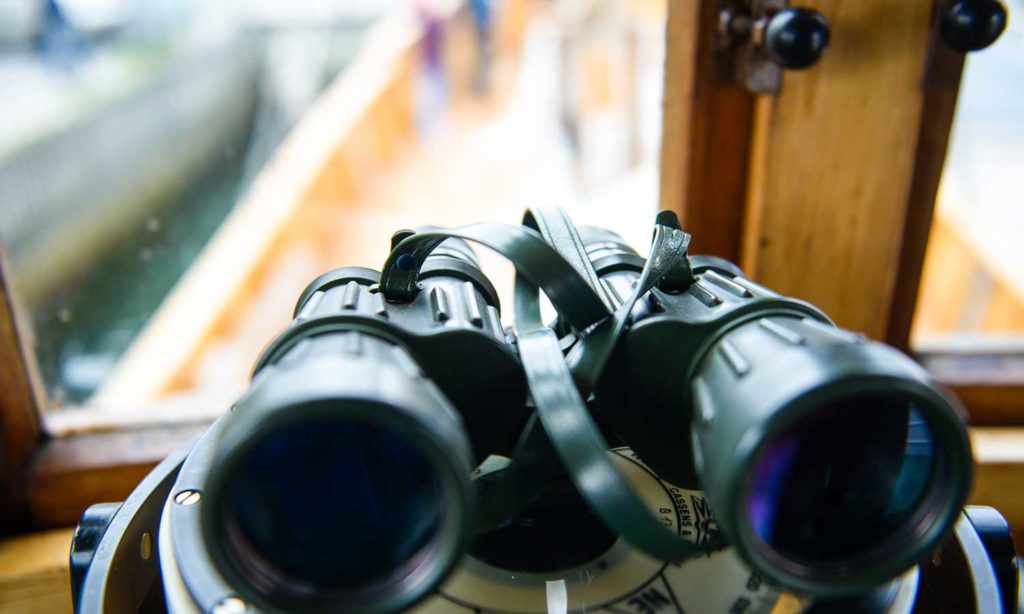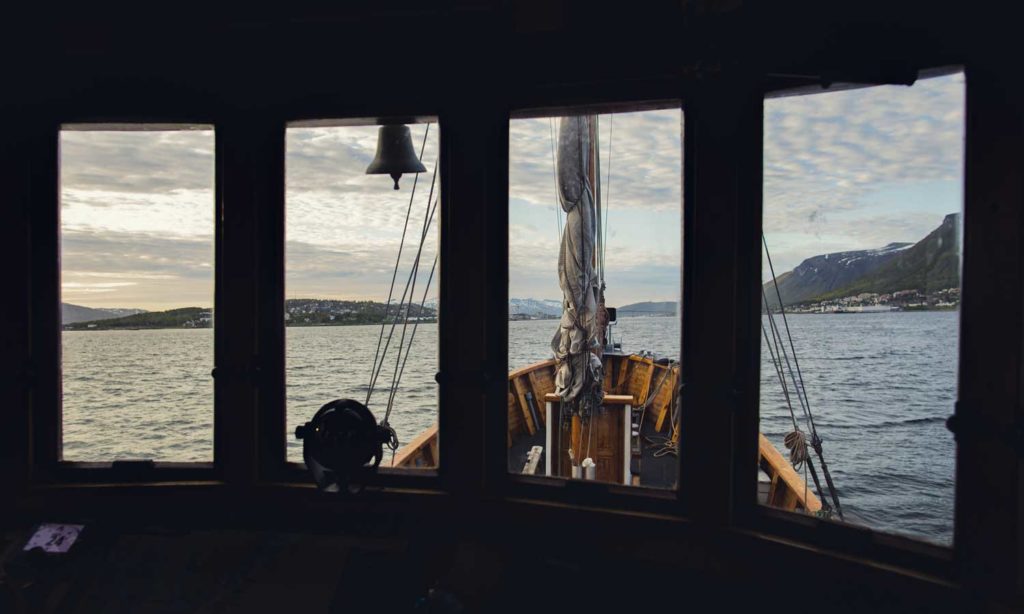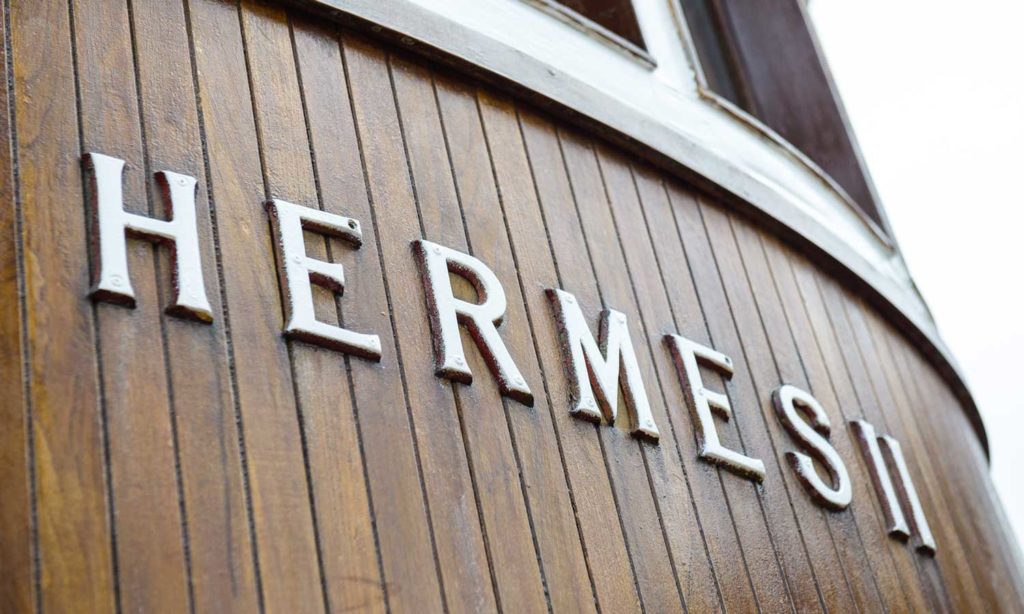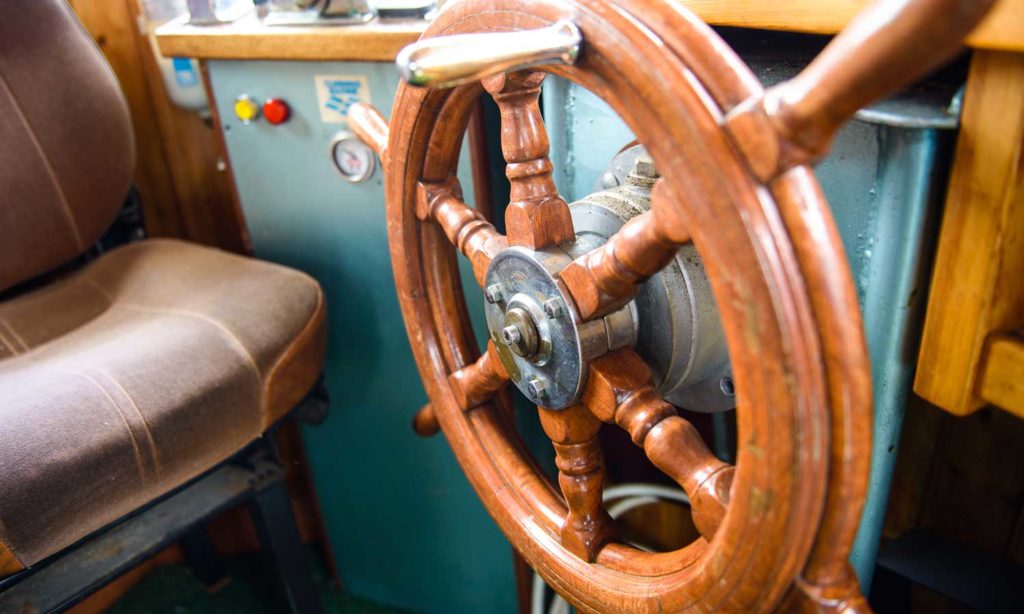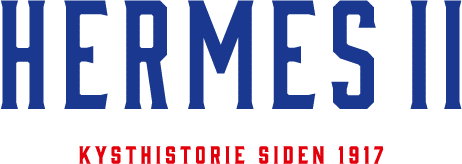
HERMES II
Hermes II is a Skandfer cutter built in 1917. Over the course of a century, it has managed to experience both good and bad times, and even a World War. However, bad times are quickly forgotten. Like when the midnight sun shines and it is impossible to distinguish day from night, or when the northern lights dance as clearly in the ripples on the sea as in the sky. Green, blue and even purple. It’s always magical, even for a native.
We know that Hermes II is a unique boat. It has navigated between small and even tiny places in Northern Norway, transported coal, fish, animals, houses and churches. It participated during the evacuation that occurred after the burning of Finnmark and Nord-Troms during World War II, and it helped to rebuild the area afterwards. It has departed from quays on countless cold winter days.
More than 100 years after the boat first felt salt water under its keel, it is still here. It is a boat constructed and built by Nils Skandfer, one of the few people accepted as an apprentice by Colin Archer. Both of these eminent boat designers became famous for their elegant and very safe boats.
Today, only three such cutters have been preserved. We have a deep and passionate desire to ensure that this boat is preserved in top condition for at least another 100 years. This is only possible by allowing it to continue to sail the Arctic waters. And preferably, with you as a guest on board.
Coastal history since 1917
Hermes II is a unique piece of North-Norwegian coastal history. The cutter was launched in 1917. It was designed and built by the legendary boat builder Nils Skandfer in his boat yard at Kulstadsjøen in Vefsn. Hermes II is 72 feet long, 16 feet wide and 10 feet deep, and was originally built as a cargo boat.
BOAT BUILDING
Nils Skandfer contributed significantly to a revolution in fisheries in Northern Norway, both in terms of safety and through the motorization of the fishing fleet. Skandfer was born at Renså in Ibestad, and moved south in 1898 to begin as an apprentice with Colin Archer. He must have made a good impression there. Archer was known for keeping his cards close to his chest when it came to the boats he designed and built, but he made a rare exception for Skandfer.
Skandfer lived up to his master’s expectations and eventually became renowned nationally for his ingenuity as a boat designer. Due to the boats’ excellent seagoing properties, Skandfer-boats became a concept. Hermes II is one of the last remaining vessels built by Nils Skandfer himself. It was originally equipped with a 40 HP Bolinder semi-diesel engine and sails as propulsion. The vessel has had seven different engines over the years, including a 180 HP Lister. The current engine is a Cummins 335 HP that has worked faithfully in the engine room since 1972.
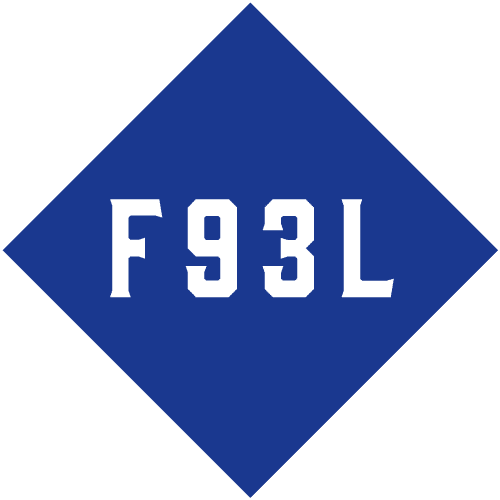
Over 100 years of coastal history
Hermes II was commissioned by merchant Eilert Ingebrigtsen from Alta. The boat was built as a cargo boat and was used for freight shipping right up to the mid-1960s. Then it was gradually used more as a fishing boat for parts of the year and was used for line fishing along the coast and in the Barents Sea for capelin and shrimp fishing. It continued to be used to carry freight at times of the year when it was not used for fishing, primarily in Northern Norway.
Hermes II has been renovated several times, in the 1930s, 1950s and 1960s. Today’s version of the boat is essentially the way it looked after it was renovated in 1962.
Word War II
During World War II, being at sea was more dangerous than usual. Hermes II was one of the many boats requisitioned by the Germans for various tasks. The crew thus took a major risk when they sabotaged the engine so that the Germans would have the least possible benefit from the vessel.
In 1944, Hermes II participated during the evacuation of Finnmark. Since its engine had been sabotaged, it had to be towed by another boat. After the war, Hermes II was used to transport materials for houses and churches that were erected as replacements for the buildings burned down by the Germans when Russian troops forced them to retreat southwards. Many of these houses are still standing today along the coast of North Troms and Finnmark.
The start of today's Hermes shipping company
In 1952, Hermes II was purchased by the shipping partnership Martin Andersen and others. From 1967, Andersen’s son, Jan Arne Lerbukt, gradually took over the operation of the vessel. 1952 is also regarded as the start of the current fishing boat company, Hermes AS, which took its name from this first large boat that was acquired by the Andersen/Lerbukt family from Bergsfjord in Finnmark. Today, the third generation of the family operates the shipping company.
Hermes II is restored
Hermes II was laid up for a short period in Tromsø before it was given to Bernhard Strandvoll and the coastal group Hermes II in Mo i Rana in 1990. It is largely due to them that the boat has been preserved as well as it has today. The coastal group carried out extensive restoration and conservation work between 1990 and 1996 and new, necessary restoration work was conducted in the period 2014-2016.
Back to the Lerbukt family
In the autumn of 2016, Hermes II was bought back by the shipping company Hermes AS and the family who owned the vessel from 1952-1990. The vessel was sailed north to Tromsø on 10 October 2016.
After another extensive restoration period from 2016 to 2019, the cutter is now in very good condition. It can certainly be called a jewel of a boat and is today considered a rare treasure of coastal culture.
Welcome on board
Hermes II celebrated its 100-year jubilee in 2017, and the most important thing for today’s owners is that the cutter is preserved for the future and that the vessel’s proud history is passed on through its active use. This is apparent when Hermes II departs from its permanent dock in Torghuken in Tromsø, to be used for tours and for the dissemination of the boat’s exciting coastal history.
The tours are arranged in order to fund further maintenance and conservation of the boat, so that it can continue to be enjoyed by new generations.
Welcome on board!

